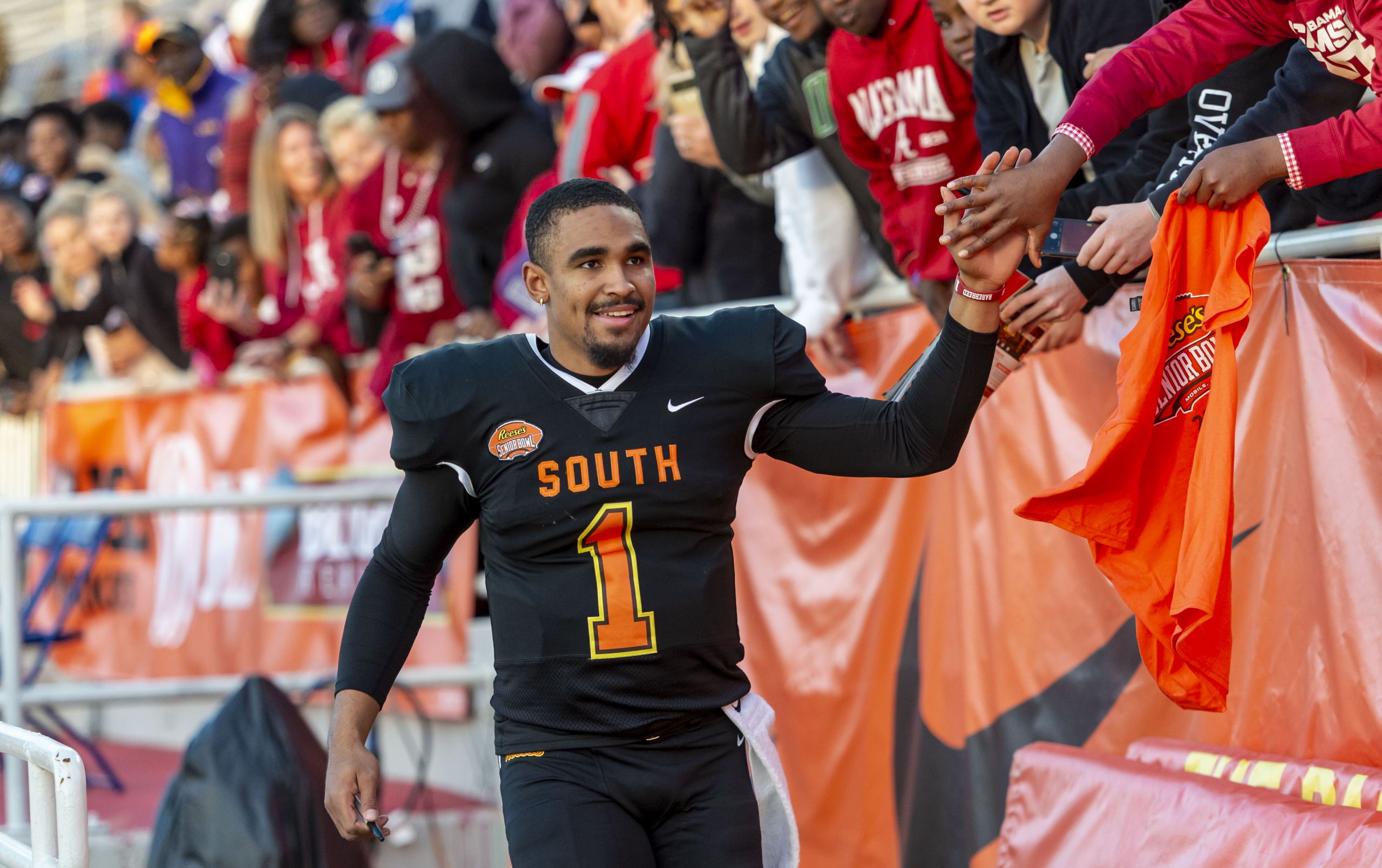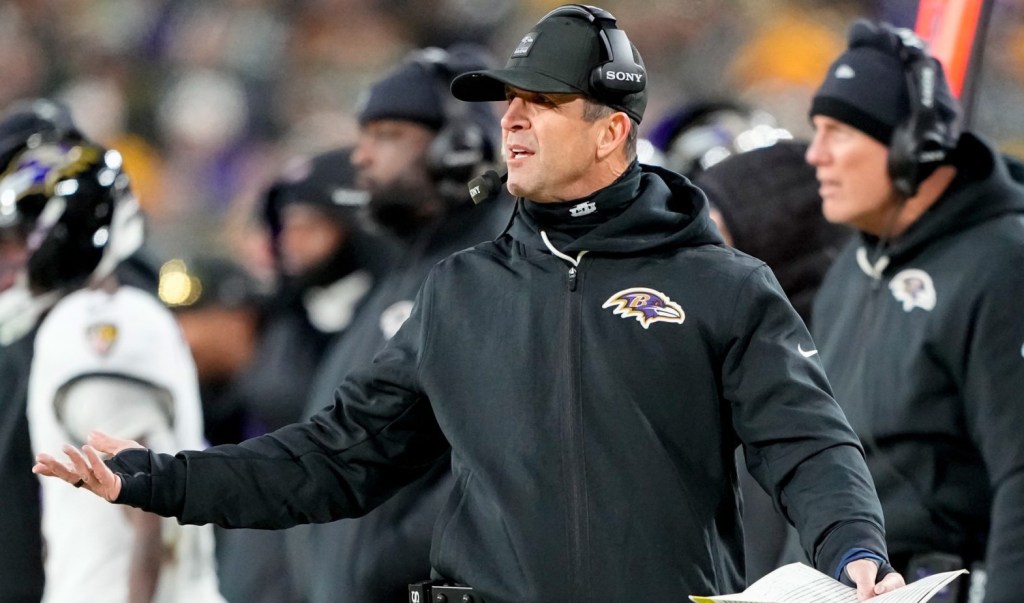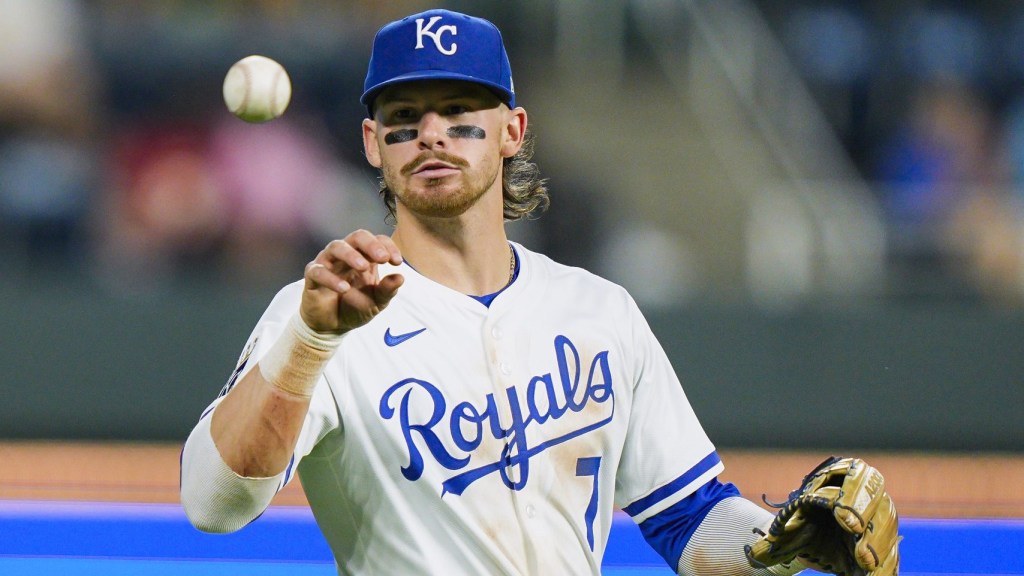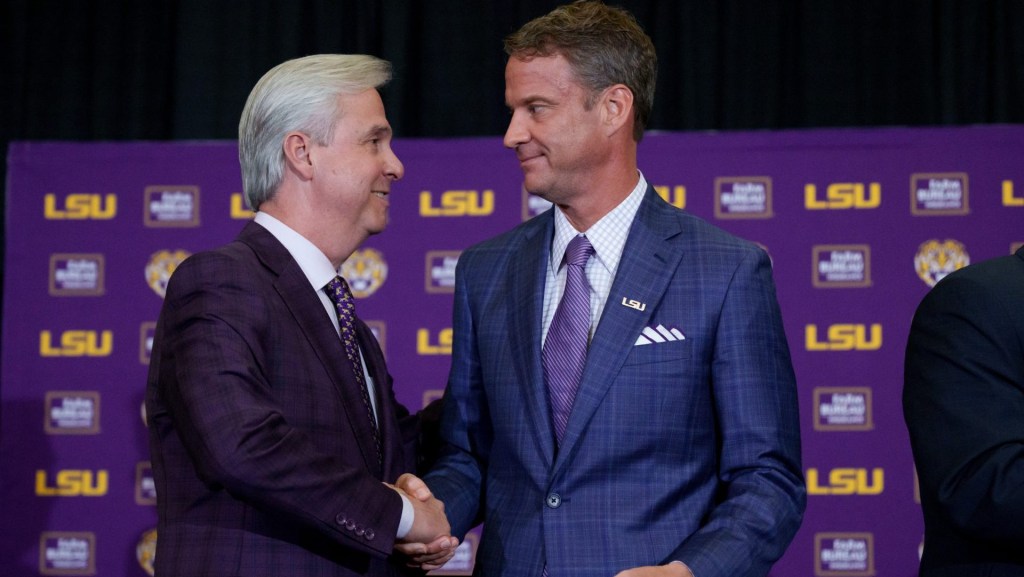Aloha Stadium saw the return of the Hula Bowl this winter after a 12-year hiatus. But as just 4,000 spectators – albeit twice the Hula Bowl’s last crowd before it was temporarily discontinued in 2008 – sparsely speckled the state’s largest stadium at the end of the college football all-star game cycle, the question became whether or not there is a market for another college football all-star game.
The Hula Bowl’s return means there are now four major all-star games for seniors in the sport in 2020 – the Reese’s Senior Bowl, the NFLPA Collegiate Bowl, and the East-West Shrine Bowl.
However, organizers say they’re not necessarily competing for fans or viewers. What they’re more so competing against each other for is the experience and exposure for their participants, which has become paramount.
Each bowl aims to serve as a showcase opportunity for players interested in pursuing the sport professionally. While for most that means the NFL, the CFL, and re-booted XFL are also options.
All of the four major bowls are NFL-sanctioned events that bring team scouts and executives on site. The participants then can showcase themselves to prospective employers to enhance their profile or draft status.
And while four games with the same goal may sound like a lot, it might not be after all.
“There is an avenue by which each one of these properties can succeed if you look at it through the lens of what’s the intent of each of these opportunities and not how many people are going,” Andrew Judelson, Learfield IMG College executive vice president of national sales and marketing, said.
“At each event, you have a roster of 50 or so on each side, so that’s at least 100 players. Assuming there’s no overlap, that’s three to 400 student-athletes who are showcasing. And then if you look just at the NFL draft alone, you’ve got seven rounds of 32 teams, so that’s 224 drafted positions, let alone anyone who signs as an undrafted prospect.”
Judelson notes that there’s also an increased demand for content from a variety of media companies. The arrival of an additional bowl, like the Hula Bowl this year, helps supply that.
READ MORE: NBA All-Star Merch Record Tied to Local Flavor
The NFL Network picked up three of the showcase games this year – the Senior Bowl, East-West Shrine Bowl and the Collegiate Bowl. CBS Sports broadcast the Hula Bowl’s return.
Differentiation, then, becomes key.
“I think what differentiates our game from other games is that full NFL staffs are coaching the players and then the history and the tradition behind it as it’s been the premier game for a long time,” Jim Nagy, the former NFL scout who is now the executive director of the Reese’s Senior Bowl, said.
Executives from all games agree that the Senior Bowl has cemented its status atop the totem pole of all-star showcases and generally lands the country’s most lauded prospects. The event produced ten first-round draft picks in 2019. Overall, 93 players who played in the game were drafted – which was 37% of the draft – 40 of which were taken in the first three rounds.
The Senior Bowl also credentialed nearly 1,000 NFL-related attendees, an astronomical number compared to the Hula Bowl’s 50 scouts representing 26 teams or the 200 team staff that attended the Collegiate Bowl. The Shrine Bowl declined to comment on the number of team-affiliated attendees.
“That’s why we’ve branded this thing as ‘the draft starts in Mobile,'” Nagy said. “We’re trying to hammer home that point that if you’re a first or second-round pick, you almost have more to gain by coming to play here. If you’re going to be picked in the teens somewhere and you go from No. 18 to 12 because you played well here, every single one of those draft slots you went up is worth millions of dollars. Or you can make a big jump in other rounds of the draft.”
The appeal of the Senior Bowl for players, therefore, is the potential of increasing value. The appeal for the other games, then, lies in doing the same for the rest of the players looking to be drafted in the later rounds who won’t make the cut for Mobile. Many come from non-Power-5, Division II, Division III or FBS schools and have a chance to prove themselves in front of decision-makers who might not have seen them during the regular season.
To bring that talent to their games, though, the remaining contenders need to have a unique value proposition to propel them forward.
“The Senior Bowl – I don’t think anyone is going to argue that that’s the mack daddy,” Hula Bowl owner Nick Logan said. “But that’s only for 100 guys. We believe there are three to 400 more qualified guys who can compete in the NFL. So the question becomes if you’re not going to the Senior Bowl, what’s your second choice?”
Locking those remaining prospects in is where differentiation takes on even greater significance.
“The 101-400 potential picks, they’re the goal,” Logan explained. “If you’re not going to the Senior Bowl, and everyone has quality coaches and can get participation from the scouts, then it comes down to, ‘Where do I want to play my postseason all-star game?’ Or, as a scout, ‘Where do I want to spend a week?’ If the choices are the mainland of Hawaii, we think we have a certain element of advantage.”
While Mobile leverages its 71-year legacy and Hawaii sells its location, the Collegiate Bowl puts a priority on the unique value of playing in a showcase sponsored by the NFL Players Association.
READ MORE: Hard Seltzer Spilling Into Sports Partnerships
In addition to their NFLPA-specific programming, several Hall of Famers are among the bowl’s coaching ranks annually, and past participants often return to advise attendees as well as to spectate.
“The big thing we focus on is the player experience,” Brandon Parker, communications manager at the NFL Players Association, said. “We want to make it more than just the game for the players in particular. The goal is two-fold – one: to prepare the participants for making it to the next level, and to succeed. Not only just getting drafted but making sure they stay there and have the tools on and off the field to succeed. Two, with that, getting them exposure when it comes to scouts.”
The East-West Shrine Bowl focuses on locale as well as the ethos of the game as a charitable initiative. And with neither the Shrine Bowl or the NFLPA Bowl reeling as a result of the Hula Bowl’s return – even while targeting the same group of players – it seems that there is still a market for more showcase games. That is, at least, as long as they continue to draw market-specific crowds and sponsors.”
“Three or four of these games are not three or four too many,” Judelson said. “There is a channel and an avenue by which there is enough talent at the collegiate level that would be compelling for them to showcase, you have enough distribution channels that want content, you can see the appeal of each – but I think only time will tell if there’s any cannibalization of talent or sponsors or revenue or ticket sales with more and more games. At the end of the day, if you don’t have those, you don’t have a game. No matter who you can lure and how.”
For both the Hula Bowl and the Senior Bowl, increasing ticket sales in their regional markets and engaging the local communities to combat those potential complications has become a second major focus.
The Senior Bowl has continued to add community-centric events to its agenda in recent years, from its second annual Senior Bowl summit, a conference created to connect local businesspeople to sports, to a Mardi Gras themed parade followed by a free concert.
Those efforts helped snap a six-year streak of declining attendance, seeing the first uptick in 2019 and a more significant one this season.
The Senior Bowl was the only contest to draw close to a sellout crowd, filling 38,252 of Mobile, Ala.’s Ladd-Peebles Stadium’s 40,000 seats on a Saturday night, just one day before Honolulu’s home bowl came back. The East-West Shrine Bowl, played in sunny St. Petersburg’s, Fla., saw 12,785 spectators this year. The Collegiate Bowl admittedly struggles with attendance, averaging between four and 5,000 fans.
The Hula Bowl, hoping for the same sort of spark the Senior Bowl has seen, already started planning events, including a fun run and golf tournament to raise money for charity, to draw more Hawaiians to 2021’s game. They also intend to follow the Senior Bowl’s lead and tap into social media to spread the word on a larger scale, with staying laser-focused locally still taking priority.
“When there’s no true rooting interest in a game, it’s hard to draw fans,” Nagy said. “College football attendance is declining around the country, so it’s hard to get people out to spectator events, and it’s getting more difficult. But when you can get a city to wrap their arms around something, it works.”

















